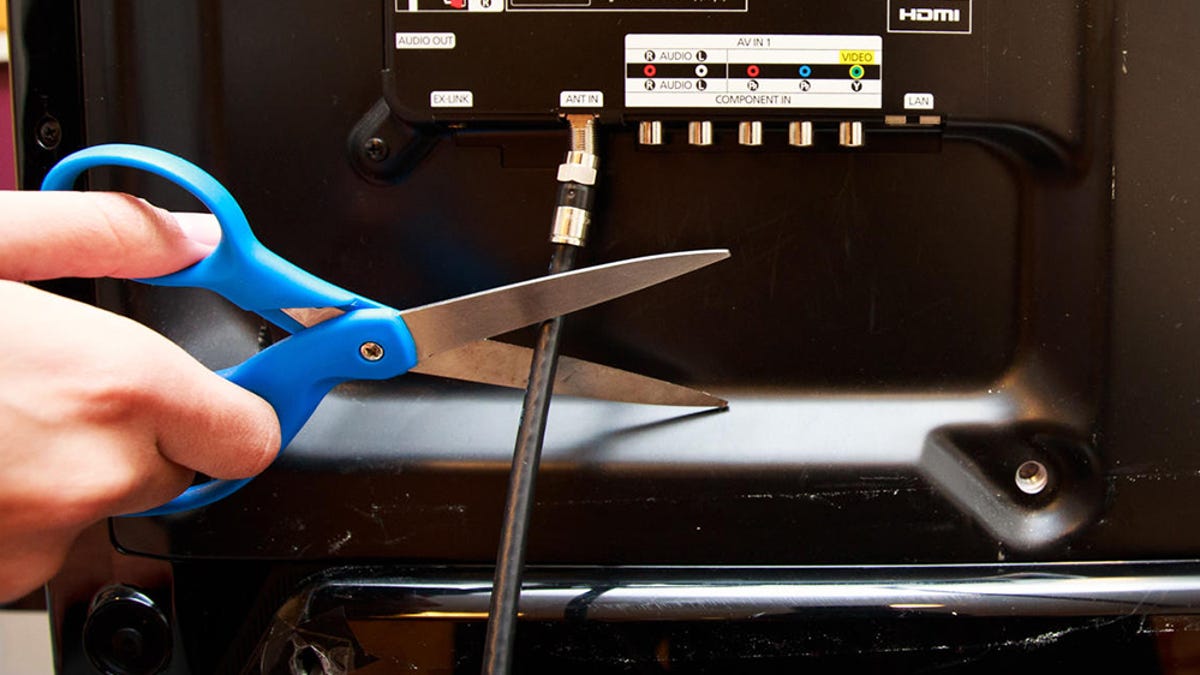AT&T to launch DirecTV Now with $35 promo on Nov. 30
That $35 monthly price for more than 100 streaming channels is a temporary deal to lock you in, but anyone can add HBO for just $5.

AT&T's new online TV service, DirecTV Now, will launch Wednesday at its promised low, low price: $35 for over 100 channels. But customers will have to lock in that deal.
Packages for the DirecTV Now live-TV streaming service will range from $35 for more than 60 channels to $70 for more than 120 channels. But the deal that AT&T has touted for a month -- more than 100 channels for $35 -- is a discounted price during a promotional period. That tier normally will cost $60. The company isn't saying how long the the deal will be available.
Those members won't lose that lower pricing as long as they remain customers, a move to both entice people to try the service and keep them from falling off the wagon.
AT&T is the latest company jostling to win consumers who are opting out of traditional pay-TV subscriptions. Over the last three years, cord cutters and others have been treated to a flood of options to unlock "real" TV online. Tech players like Netflix and other video-on-demand streamers have been joined by online versions of regular networks, like HBO Now, but cobbling together multiple digital subscriptions can end up costly for consumers.
DirecTV Now is part a new breed of online television aimed at cutting through the complication, by mimicking the benefits of regular pay-TV without the old-school trappings everyone hates. These so-called "over-the-top, skinny bundle" services provide most of the regular TV you like in one place, but they deliver it online without long-term contracts, installation appointments or big bills for billions of channels you never watch.
"What we're beginning to do is take that content and deliver it purely as an app, with the depth and breadth of content that's in the [full-fledged DirecTV] pay-TV service," said Tony Goncalves, AT&T's senior vice president of strategy and business development, in an interview last month in preparation for the coming launch.
A stream of hits and misses
On Monday, AT&T detailed other bonuses to lure in customers.
Subscribers can add HBO for $5 a month, versus the $15 cost for the premium network's standalone app, HBO Now.
Customers who prepay for three months of DirecTV Now will get an Apple TV, a box that connects to big-screen TVs to stream online video. People who prepay for a single month get an Amazon FireTV Stick, another TV streaming device.
DirecTV Now members also will be comped a one-year subscription to a digital-native video service, Fullscreen. AT&T is a part owner in Fullscreen.
But the service has gaps, too.
DirecTV Now doesn't include a parallel for DirecTV's popular NFL Sunday Ticket product, which unlocks the ability to watch to every Sunday pro football game even if you're watching in an area where that game isn't being broadcast.
NFL content is tricky, generally, on DirecTV Now. Verizon has an exclusive mobile live-streaming deal with the pro football league, which means that DirecTV Now won't have mobile live viewing of games. Some local broadcast networks that aren't owned and operated by their parent company may not make NFL games and other primetime content available live, with some available a day after airing.
DirecTV Now's lineup doesn't include CBS ' main broadcast network and other channels it owns, like Showtime. (Editor's note: CBS is CNET's parent company.)
In a bid to steal some of DirecTV's thunder Monday, Sling announced it would begin testing a DVR feature that lets members record some programming to watch later.
DirecTV Now won't have DVR features at launch. Executives stressed that DirecTV Now would launch as a first version of the service and that they would refine and improve it on an ongoing basis.
A growing field
AT&T already announced in October that DirecTV Now will cost $35 a month for more than 100 live channels, setting it up as a competitor to traditional cable and satellite as well as existing online upstarts like Sling TV from rival satellite provider Dish. It will also compete against AT&T's own U-Verse TV and DirecTV pay-TV services.
Sling starts its basic bundle of 25 channels for $20 a month. Playstation Vue, a so-called "skinny bundle" digital service from Sony, prices its cheapest package at $40 a month for more than 45 networks.
The competitive field will only grow more crowded. Next year, Hulu plans to launch a live-TV element to complement its Netflix-like library of on-demand TV shows and original series. Google's YouTube, Apple and Amazon have been working on similar efforts.
Mobile sets DirecTV Now apart. With its acquisition of DirecTV last year, the second biggest mobile carrier in the country became a big pay-TV provider too. Unlike its competitors in over-the-top TV, AT&T's enjoys a national network of mobile customers, at a time when video is dominating mobile usage. About 60 percent of the data on AT&T's own network is gobbled up by its customers' video viewing.
"We develop this with the mindset that it had to be mobile," John Stankey, CEO of AT&T's Entertainment Group, said Monday.
The surge in online video options has been matched by a flood of subscribers out of traditional television services. The eight largest public pay-TV companies lost a combined 926,000 subscribers in the first nine months of this year, according to a tabulation by BTIG analyst Rich Greenfield earlier this month. That compares to 533,000 member losses in the same period a year earlier.

